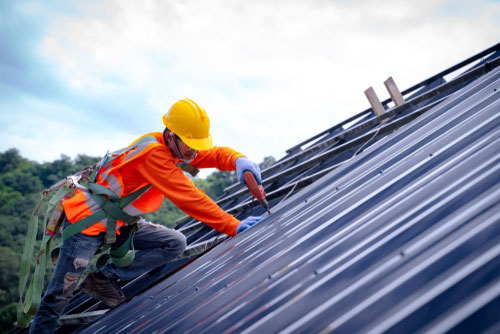How to Assess Different Roof Covering Alternatives for Your Structure Demands
Assessing roof options for your building requires a comprehensive strategy that thinks about various variables such as the planned usage of the framework, local climate problems, and material attributes. It is important to consider the benefits and downsides of various roofing types, from asphalt roof shingles to steel and clay ceramic tiles, while additionally considering first prices and long-lasting maintenance. Furthermore, comprehending energy performance and visual appeal can influence your choice. As you consider these factors to consider, one concern continues to be: which factors will ultimately direct your choice for a lasting and visually pleasing roof covering option?
Evaluating Your Structure's Requirements
To properly examine roof covering options, begin by thoroughly evaluating your building's needs. Start by taking into consideration the structure's intended use, as various structures may require differing roof specifications. For example, household roofings commonly focus on visual appeals and insulation, while industrial structures may concentrate on longevity and load-bearing ability.
Next, evaluate the regional environment conditions that will certainly impact roof covering efficiency. Elements such as temperature level changes, rainfall degrees, and wind patterns can influence material selection and design. A roof system that excels in a temperate climate may not perform as well in locations prone to heavy snowfall or severe heat.
In addition, evaluate the architectural stability of your building. Make certain that the existing framework can support the chosen roof covering products, especially if considering larger alternatives. It is also essential to examine any kind of regional building codes or regulations that might dictate specific needs for roof systems.

Contrasting Roof Covering Materials
When an extensive assessment of your structure's requirements has been completed, the next step includes contrasting various roof covering products. Each material supplies distinctive advantages and disadvantages, making it vital to straighten your selection with your details demands and conditions.
Asphalt tiles are widely recognized for their price and simplicity of installment, making them a preferred option for household buildings. On the various other hand, metal roofing, known for its sturdiness and longevity, can hold up against rough weather condition problems however might feature a higher first investment.
Clay and concrete tiles give outstanding thermal insulation and aesthetic allure, especially for Mediterranean-style architecture, yet they call for a more durable architectural support because of their weight. Timber trembles offer an all-natural look and good insulation homes however may require a lot more maintenance and are vulnerable to fire hazards.
Evaluating Expense and Budget
Examining your roof covering choices requires a mindful evaluation of price and spending plan considerations. The total allocate a roofing task makes up numerous elements, consisting of material prices, labor expenditures, upkeep, and possible long-lasting financial savings. It is important to establish a clear budget plan prior to exploring particular roofing products, as this will certainly guide the decision-making process and help you avoid overspending.
Begin by obtaining quotes from several specialists to comprehend labor costs in your region. Make sure that these quotes include all necessary services, such as removal of the old roof, installation, and any extra attributes, like insulation or ventilation enhancements - Toledo Roofer. Next, evaluate the Bonuses cost of different roofing materials, considering both preliminary setup expenses and expected life expectancy

Understanding Power Effectiveness
Energy performance plays an important duty in the choice of roof products and systems, significantly affecting both energy usage and general convenience within a structure. An appropriate roof can boost thermal performance, decreasing the need for home heating and cooling down systems, which consequently reduces energy costs and decreases ecological impact.
When assessing roof covering choices, consider materials that mirror rather than soak up heat. Furthermore, correct insulation and ventilation are vital to maximize the power efficiency of the entire roofing system.
Another crucial factor is the roof's long life you can try these out and upkeep needs. Long lasting products that call for much less regular replacement add to long-lasting energy savings. Furthermore, the energy efficiency of a roof can additionally be evaluated through its compliance with established sustainability ratings such as ENERGY STAR or LEED.
Thinking About Aesthetic Charm
A roofing system's visual allure substantially influences the overall appearance of a building, complementing its building design and boosting visual charm. Perrysburg Roofer. When evaluating roofing options, it is necessary to consider exactly how the chosen material, shade, and design will certainly integrate with the existing structure and click site neighborhood. A well-designed roofing can boost even the easiest of buildings, changing them into visual centerpieces
Various roof products supply various aesthetic qualities. For instance, typical tiles may stimulate a timeless appeal, while metal roofing can present a contemporary, smooth appearance. In addition, the color of the roof product plays a crucial duty; lighter shades can make a building show up more sizable, while darker tones might create a cozier atmosphere.
In addition, architectural elements, such as dormers and eaves, can boost the roof covering's aesthetic effect. It is a good idea to speak with expert designers or architects to guarantee the chosen roof option aligns with the general design intent. Eventually, a roof covering ought to not only provide practical benefits however also contribute positively to the building's aesthetic, reflecting the proprietor's taste and the personality of the surrounding atmosphere.
Conclusion
